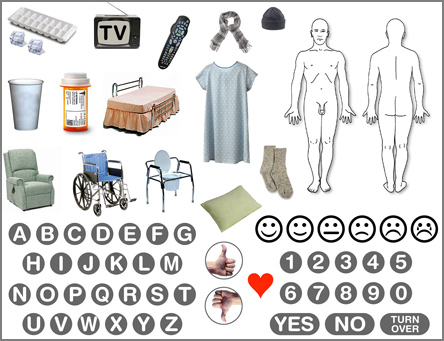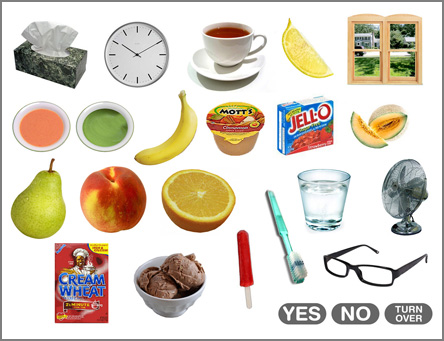A few years ago my father was in hospice care during the last days of his life. Over the span of a couple of weeks his ability to communicate deteriorated rapidly. Not that he couldn’t communicate completely, but a number of barriers prevented his ability to communicate easily. Among them, not having enough energy to speak, or coughing fits in the middle of speaking. Nurses that came and went, as wonderful as they were, often did not speak English as a first language, which also made it hard for him to communicate.
At the time when all of this was happening, I was reflecting on how very young children who have not yet learned how to speak would just use a finger to point to things they wanted. The same is true for a young child using an iPhone, all they need to do is point or swipe. Why is it that using an iPhone or an iPad is so easy for a twelve month old child? In the research world there’s a concept called “cognitive load”. In the context of computing, if you make a user interface easy to use then there are less barriers, less cognitive demands on simply using a computer and more cognitive resources available to take advantage of what you wish to accomplish with a computer. In the context of hospice care and communication there are things a person needs to effectively communicate that have nothing to do with the actual message. For example, having enough energy to speak, the ability to breathe easily, or having minimal muscle coordination, or the ability to use your tongue or larynx. If a person has a message to share with others, the components of communicating like those just mentioned can become barriers for the successful delivery of that message.

Sample page of a two-page communication tool for helping hospice patients communicate. (Click image to see larger version and instructions for saving. Version for women also included.)
After a few days of watching my father struggle to be understood I created a paper-based way for him to get his messages across. A thick piece of paper, on each side containing many pictures of things he would ask for in the course of a day. All he would need to do is point to what he wanted on these two pages. Having the ability to communicate by pointing removed the cognitive demands of being able to communicate through talking. Many items on these pages related to his need to be comfortable, moving from bed to couch, then bathroom and back to the bed. I noted a number of hand gestures shared between my mother and father, mostly shorthand for yes or no, good or bad. Also a limited set of preferred food choices, particularly ice chips. Sometimes just water, sometimes juice. This two-sided paper communication tool was easy for my father to use, pointing to what he wanted in times of challenged communication. I made it for him on a Tuesday. He passed away on Thursday. In that short time it helped reduce the frustration of communicating only a handful of times, but it did help.

Second page of a two-page communication tool for helping hospice patients communicate. (Click image to see larger version and instructions for saving. Kosher verson also included.)
Recently another family member started hospice, I’ll call her Mary. Many of the same communication struggles I saw with my father can be seen with Mary, except Mary has less energy and less motor skill coordination than my father. My father had enough energy to point to areas of this two-sided paper tool. Mary does not. While Mary may not have the muscle coordination to use her hands, she does seem to have greater control of her head movements. I started thinking how such a communication tool could be used and thought maybe these pages could be enlarged, printed on a large poster board, and attached to a nearby wall at eye level from sitting upright on a bed. Then a laser pointer could be fixed to a hat, allowing the beam of light to point to items on the poster board Mary might need.
I wish to share what I have learned, along with these communication pages, hoping it can help others. If you would like a copy of these files to print out and use yourself, you can save each individual JPG file by clicking on the images above and read the instructions provided at the top of each page. Both male and female versions are available, including a kosher version for the food page. If you have an iPad or some other similar tablet, one easy way to use these files is to download them from a browser and save the files to a photo application on your device for quick access, removing the need to print.
I know every hospice situation is unique, mine is not the only story. If you have observations of your own about other successful ideas to make communication easier, or other common items requested from an ailing relative in hospice, please do share in the comments below.



